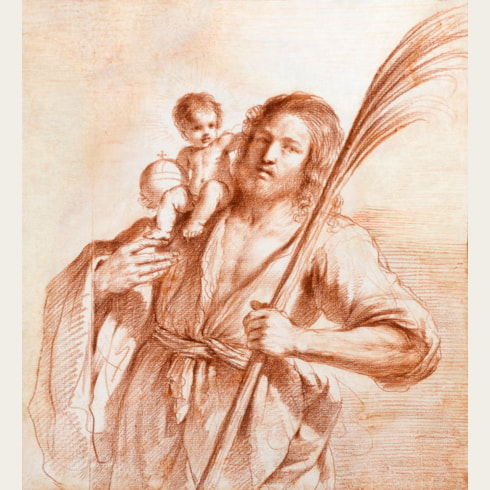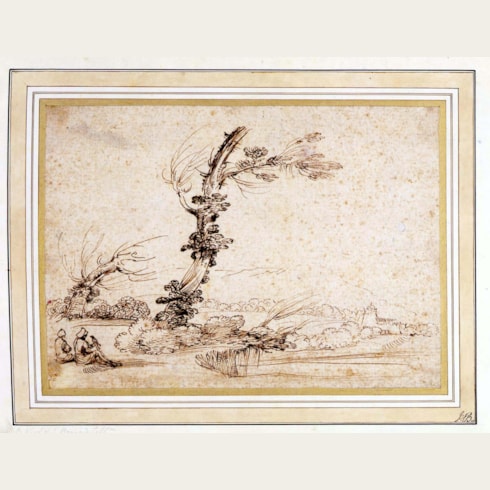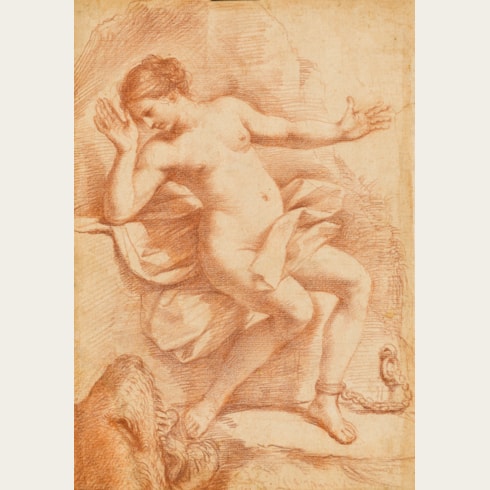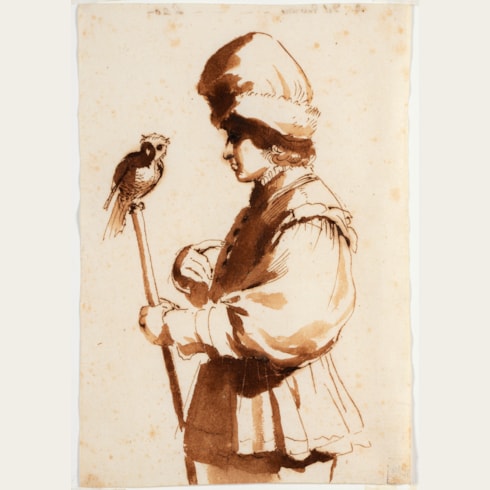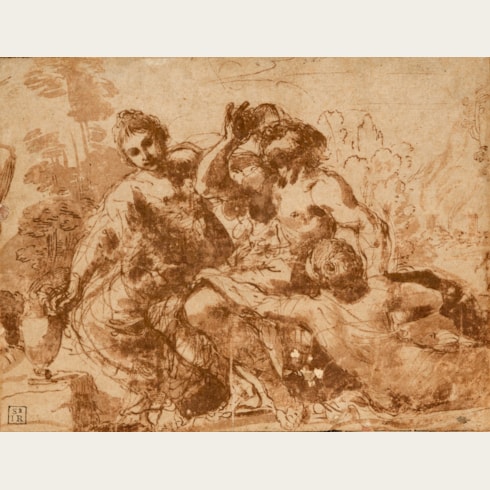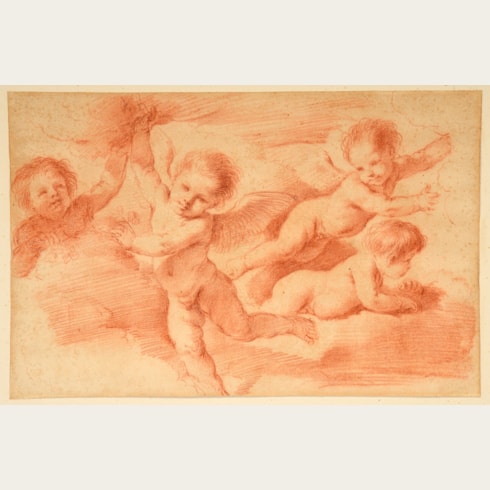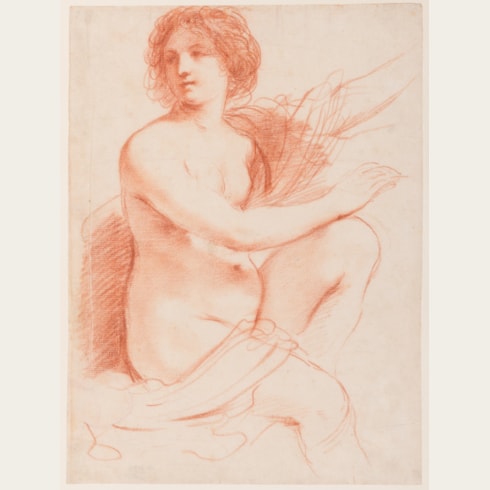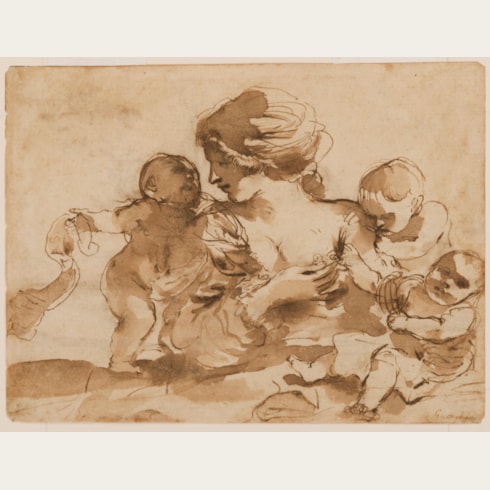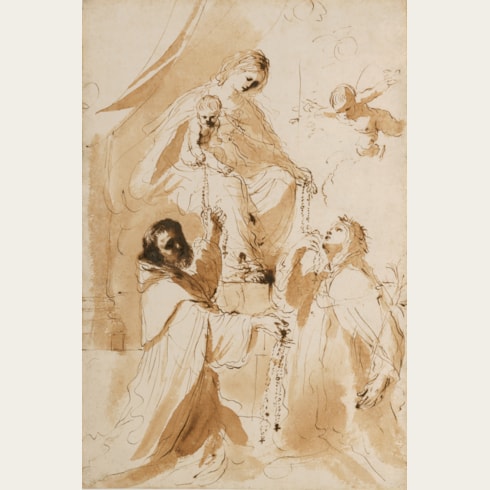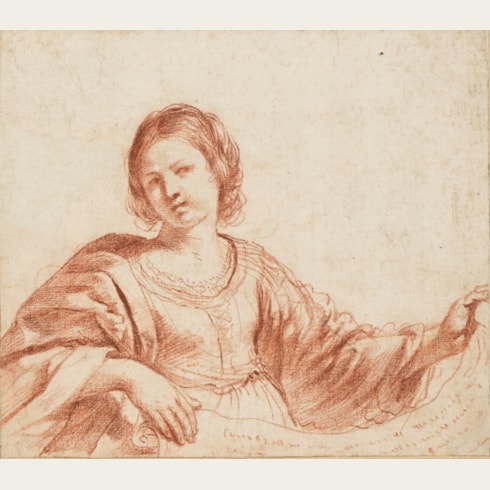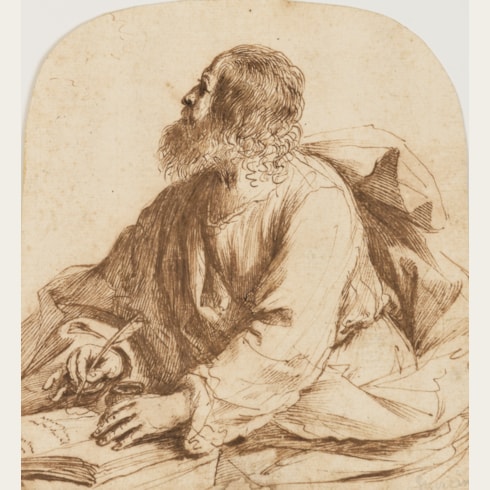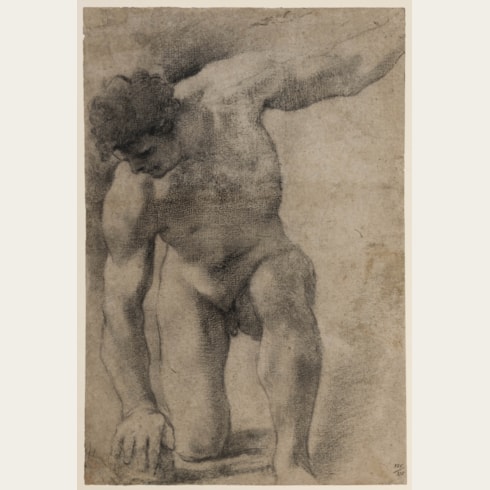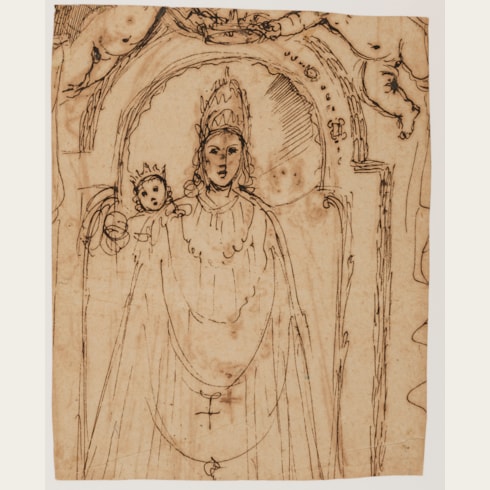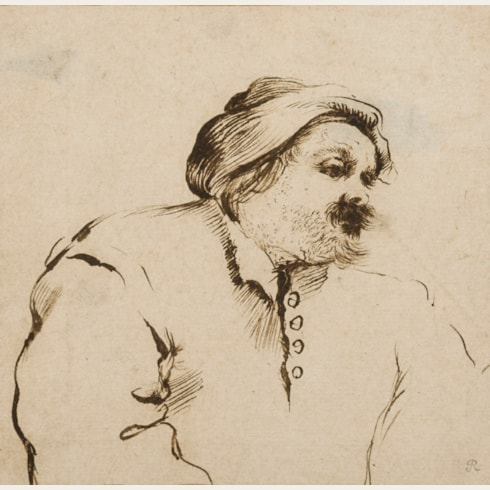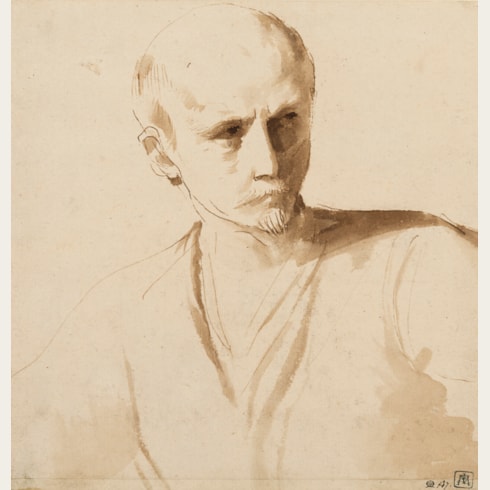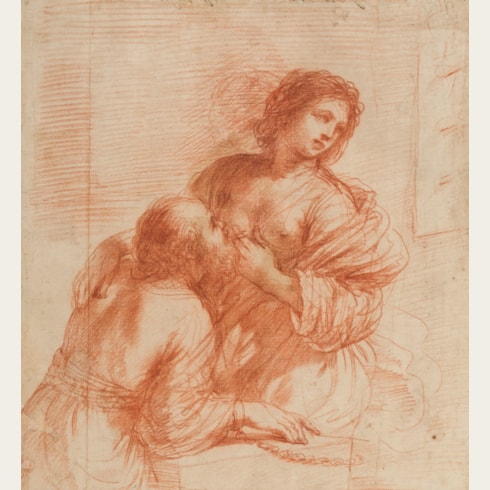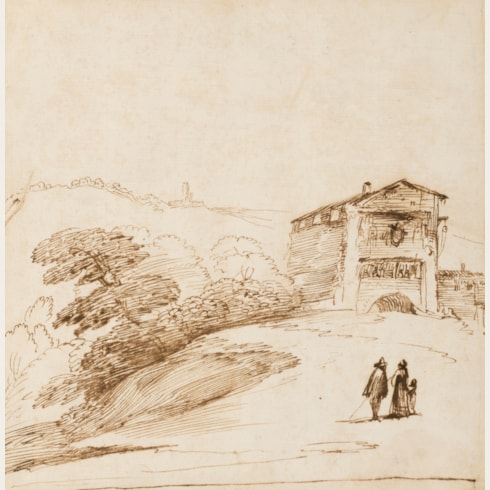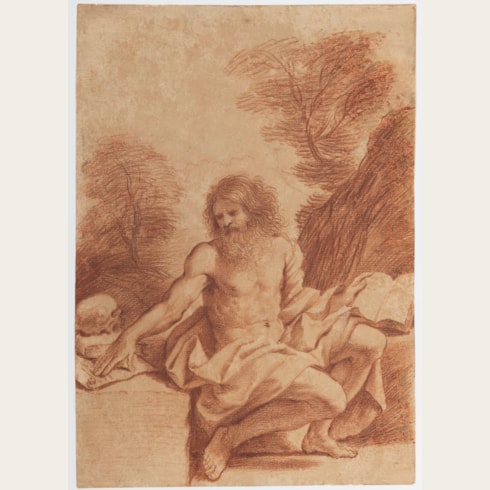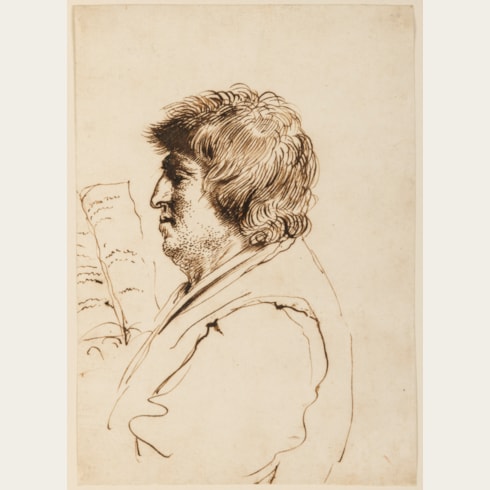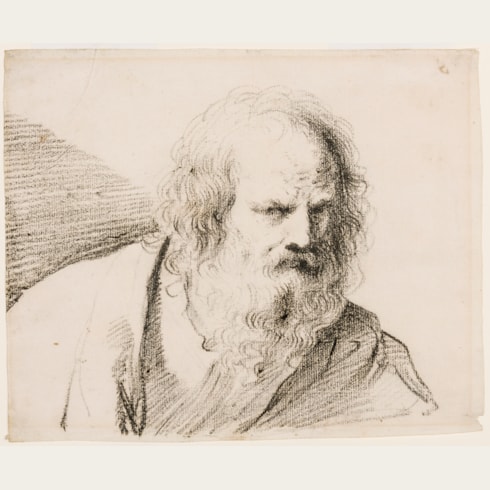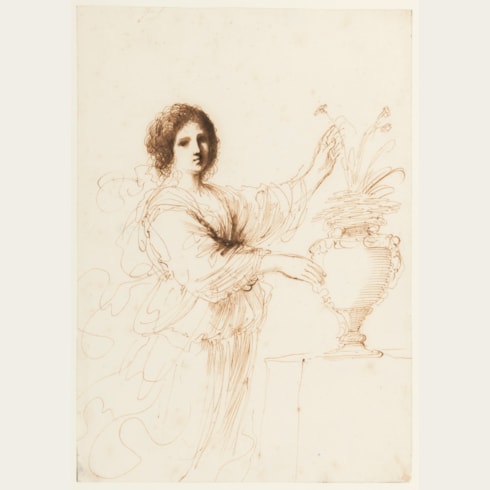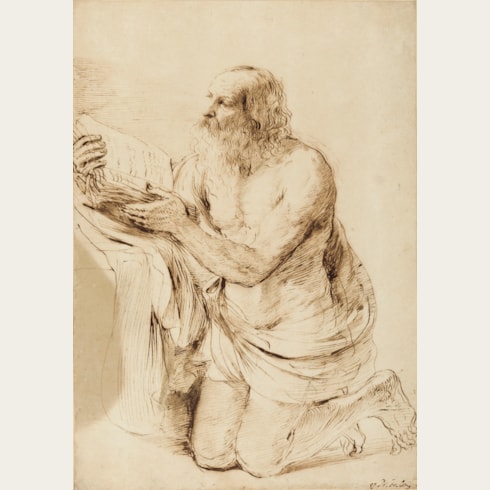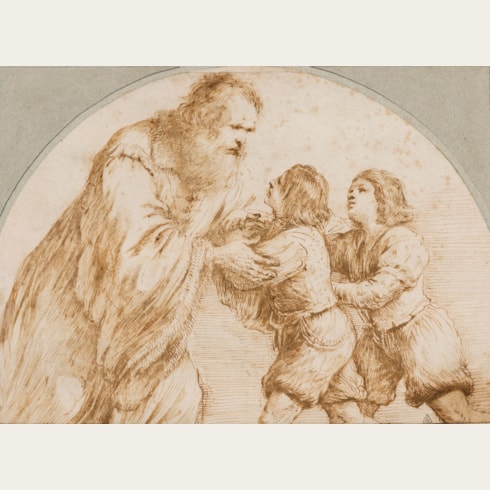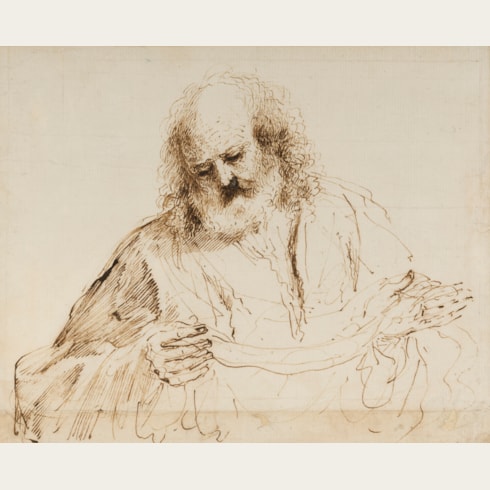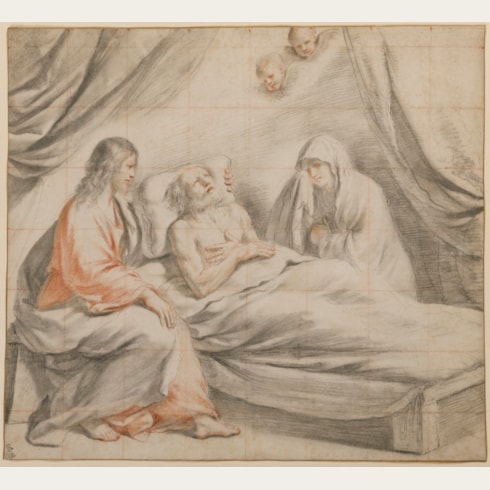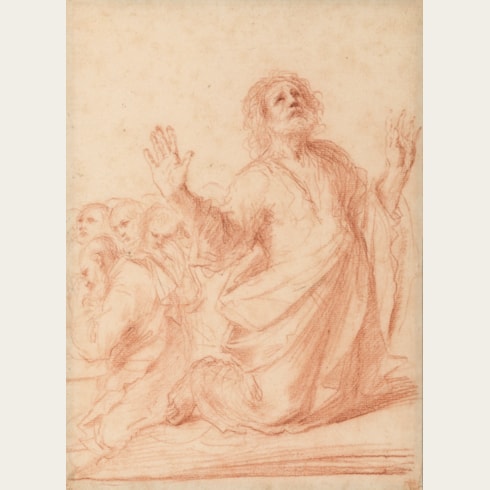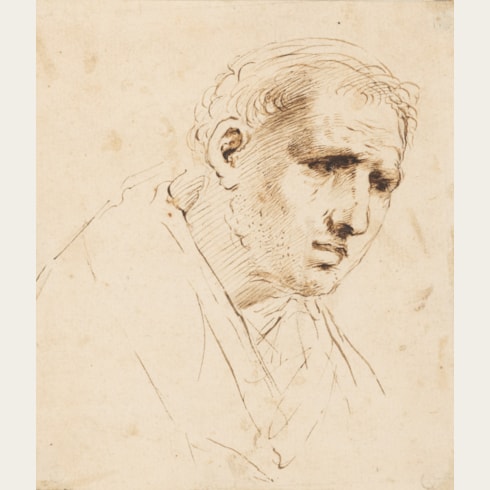Giovanni Francesco Barbieri GUERCINO
(Cento 1591 - Bologna 1666)
Roman Charity: Cimon and Pero
Inscribed Guercino at the lower left.
Numbered d.82 at the lower right.
216 x 170 mm. (8 1/2 x 6 3/4 in.)
The story of Cimon and Pero is taken from the Roman historian Valerius Maximus’s Factorum ac dictorum memorabilium libri IX (Nine Books of Memorable Deeds and Sayings), a compendium of stories of Ancient Rome, written around 30 BC. The aged Cimon is imprisoned and left to die of starvation, but is secretly nursed by his daughter Pero, who keeps him alive by doing so. This act of filial piety and selflessness impresses the old man’s jailers, and he is set free.
At least four other drawings of this subject by Guercino are known, all of which may be also be related to the Bentivoglio commission. A pen and ink drawing of Cimon and Pero, from the Casa Gennari, Bouverie, Earls of Gainsborough and Oppé collections, appeared at auction in 1971 and 2006, while another pen and ink drawing of the same subject was on the art market in 1994; in both of these drawings the arrangement of the figures is identical to that in the present sheet. A drawing of Roman Charity in red chalk, with the figures transposed so that Cimon is at the right and Pero at the left, was at one time in the H. S. Reitlinger collection and was sold at auction in 1953. Another red chalk drawing of the subject of Cimon and Pero was recently on the art market in New York, of which an offset or counterproof is in the Royal Collection at Windsor Castle.
Giovanni Francesco Barbieri, known as Il Guercino (‘the squinter’) because he was cross-eyed, was by the second decade of the 17th century one of the leading painters in the province of Emilia. Born in Cento, a small town between Bologna and Ferrara, Guercino was largely self-taught, although his early work was strongly influenced by the paintings of Ludovico Carracci. In 1617 he was summoned to Bologna by Alessandro Ludovisi, the Cardinal Archbishop of Bologna, and there painted a number of important altarpieces, typified by the Saint William Receiving the Monastic Habit, painted in 1620 and now in the Pinacoteca Nazionale in Bologna. When Ludovisi was elected Pope Gregory XV in 1621, Guercino was summoned to Rome to work for the pontiff and his nephew, Cardinal Ludovico Ludovisi. It was in Rome that Guercino painted some of his most celebrated works, notably the ceiling fresco of Aurora in the Casino Ludovisi and the large altarpiece of The Burial and Reception into Heaven of Saint Petronilla for an altar in Saint Peter’s. The papacy of Gregory XV was short-lived, however, and on the death of the Pope in 1623 Guercino returned to his native Cento. He remained working in Cento for twenty years, though he continued to receive commissions from patrons throughout Italy and beyond, and turned down offers of employment at the royal courts in London and Paris. Following the death of Guido Reni in 1642, Guercino moved his studio to Bologna, where he received commissions for religious pictures of the sort that Reni had specialized in, and soon inherited his position as the leading painter in the city.
Guercino was among the most prolific draughtsmen of the 17th century in Italy, and his preferred medium was pen and brown ink, although he also worked in red chalk, black chalk, and charcoal. He appears to have assiduously kept his drawings throughout his long career, and to have only parted with a few of them. Indeed, more drawings by him survive today than by any other Italian artist of the period. On his death in 1666 all of the numerous surviving sheets in his studio passed to his nephews and heirs, the painters Benedetto and Cesare Gennari, known as the ‘Casa Gennari’.
The drawings of Guercino, which include figural and compositional studies, landscapes, caricatures and genre scenes, have always been coveted by later collectors and connoisseurs. Indeed, the 18th century amateur Pierre-Jean Mariette noted of the artist that ‘Ce peintre a outre cela une plume tout-à-faite séduisante’. The largest extant group of drawings by Guercino is today in the Royal Collection at Windsor Castle; these were acquired from the Gennari family by King George III’s librarian, Richard Dalton, between about 1758 and 1764.
Provenance
Presented by him, as part of an album of drawings, to Monsignor Giovanni Matteo Marchetti, Arezzo, in 1698
By descent to his nephew, Cavaliere Orazio Marchetti da Pistoia
Sold in 1710 with the Resta collection of drawings, probably through John Talman, to John, Lord Somers, London (Lugt 2981), with the Resta-Somers number d.82 at the lower right
Probably his sale, London, Peter Motteaux, 16 May 1717
Richard Houlditch, London (Lugt 2214), with his collector’s mark and associated number 13 at the lower right
Probably by descent to his son, Richard Houlditch Jr.
Probably his sale, London, Langford, 12-14 February 1760
Private collection, London, by 1950
Thence by descent until 2013.
Literature





